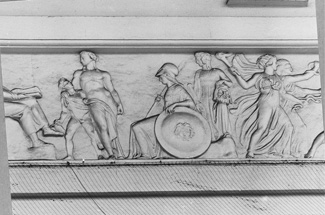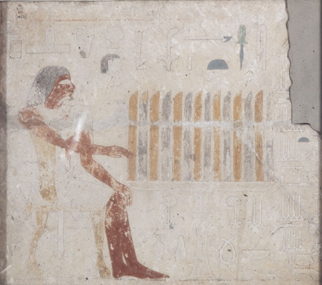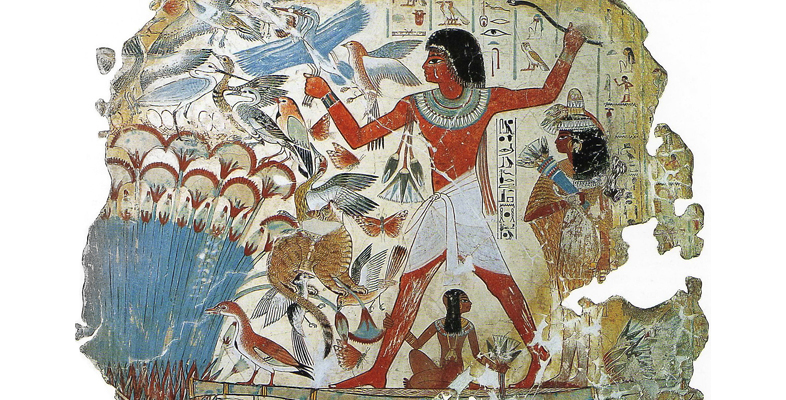4.2 The use of reliefs
Depending on factors including the time and money available, but more particularly on the geology of the place, tomb decoration could be of two distinct types: straightforward painting onto the plaster, following the design; or shallow relief, which involved cutting away the design before paint was applied.
In the case of Nebamun’s tomb, the rock at Dra Abu el-Naga was too poor to permit relief carving, so it was always going to be a flat painting on the plaster surface.
The vizier, or ‘prime minister’ Ramose, also of the Eighteenth Dynasty, had a much grander tomb on the west bank at Thebes in an area where the rock was better quality. Despite Ramose’s radically different social level from Nebamun, the relief decoration of his tomb-chapel affords a comparison with the Nebamun paintings.
In either case, painting or relief, the underdrawing would be obliterated, either by the chisel or the paint. However in some cases the design was not finished and so the drawing survives. Thus in the Ramose tomb these pictures of foreigners bringing tributes have been preserved (Figure 15).
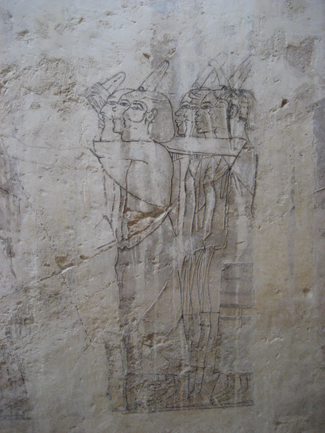
If the design were, however, carried through, the finished effect would be different. The liveliness of the drawing disappears. Incising the designs in shallow relief is a slower process and tends to produce a certain stasis or quietness in the designs.
Thus, a relief from the tomb-chapel of Ramose shows a banquet scene comparable to and contemporary with that in Nebamun’s (Figure 16). The overall aesthetic of the period is the same, but the effect is different from both the preliminary sketch in Ramose’s own tomb-chapel and the finished painting in Nebamun’s because of the different technique used to make the image.
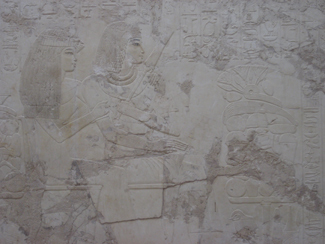
We tend to read these images rather in the way we read neo-classical reliefs. For modern eyes they can produce a kind of distance, even a certain coolness; more positively, they can convey an impression of stateliness or of the ideal.
When comparing reliefs with paintings it is true that both can appear static (Figures 17 and 18). Indeed, most Egyptian tomb-paintings do convey a certain motionlessness. However, in some cases the more rapid working procedure of painting can produce a livelier effect, as in the case of Nebamun’s tomb-chapel (Figure 19). It is not the fact of painting alone that confers the vivid effects of the paintings in Nebamun’s tomb; it is the quality of the work by the artists. But that quality depends on the relative freedom with which the surface could be worked, a freedom that could not have been as great with incised relief. This expansiveness contributes to the effects that make the Nebamun paintings particularly attractive to modern eyes, valuing as we do the kinds of effects produced by artists such as Constable, Turner and the Impressionists – effects that we read as evidence of spontaneity, and hence of a certain kind of truth.
We must remember, however, that these Eighteenth Dynasty tomb-chapel paintings emerge from a very different practical context than do the kinds of informal images we value today.
